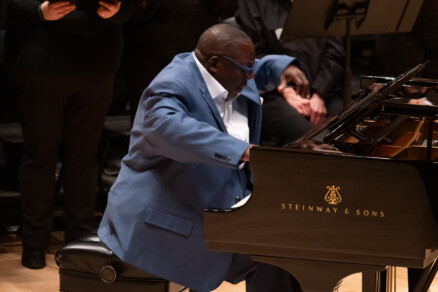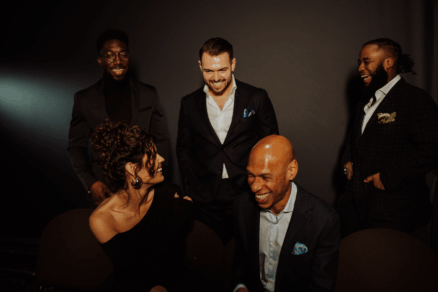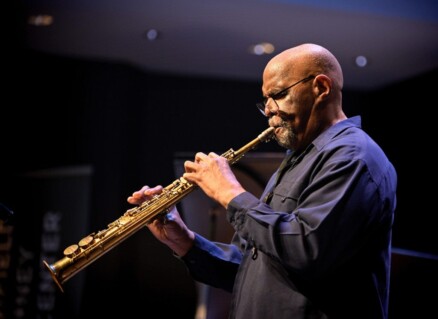For D.C. jazz musicians, COVID-19 spells difficulty now—and uncertainty ahead
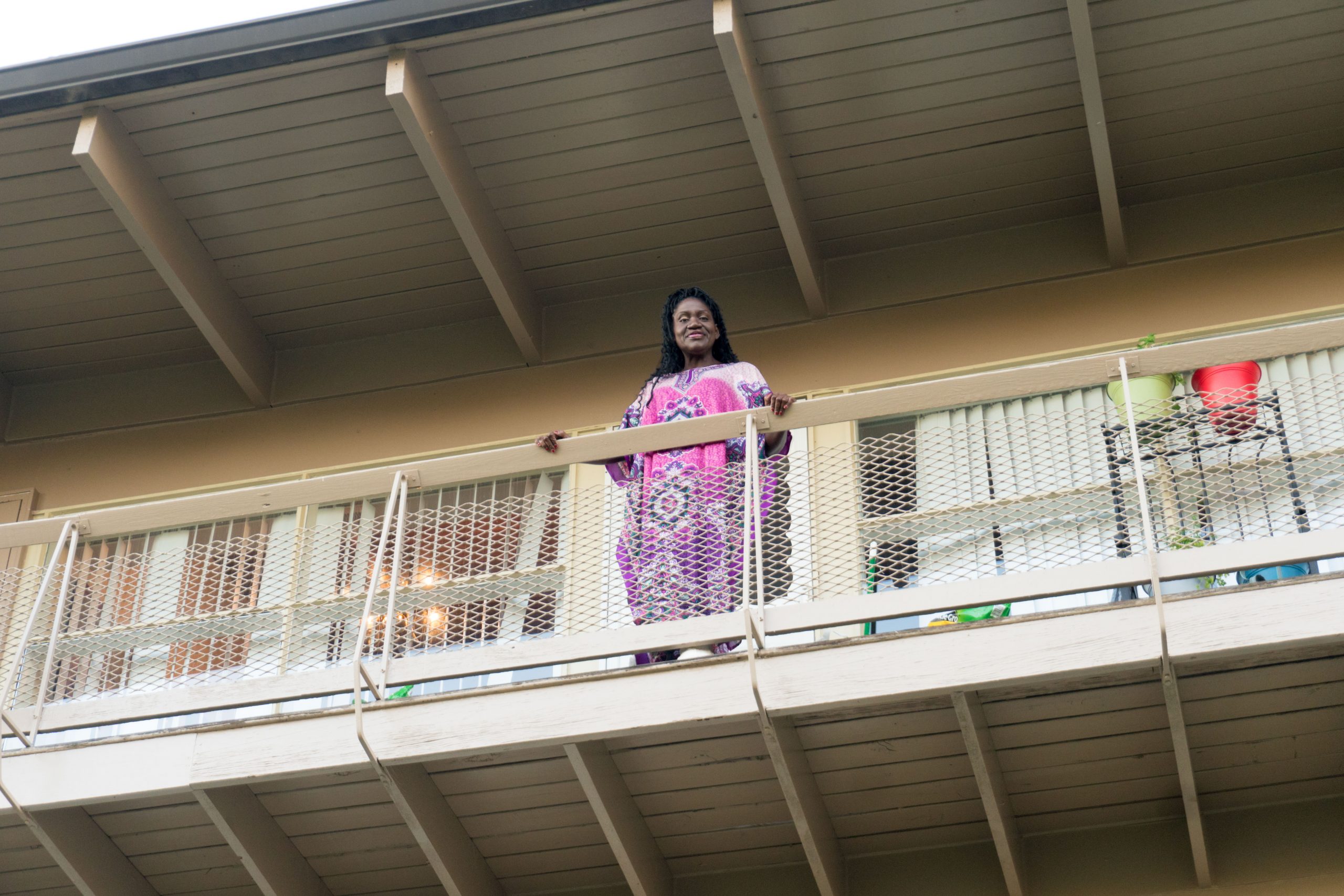
“I remember, as a little girl, the riots on U Street in 1968,” said the 58-year-old vocalist Sharón Clark, a D.C. native and veteran of the city’s jazz scene. “I remember that, when the U Street corridor was burned down. That sticks out in my mind. Of course I remember 9/11. I remember the D.C. sniper.”
“But never in my lifetime have I been afraid to go out and breathe,” she said.
Only weeks after the city announced the indefinite closure of schools, music venues and other gathering places in response to the COVID-19 pandemic, the D.C. jazz community is facing an existential threat to its livelihood, with no end in sight. Interviews with a range of musicians revealed a widely held feeling that the economic slowdown has delivered an enormous blow to the scene’s artists, many of whom were already struggling to survive in the United States’ third most expensive rental market.
The D.C. region began to report its first few cases of the coronavirus in early March. Musicians started to lose gigs and other work rapidly. Two orders by Mayor Muriel Bowser’s office, one from March 16 and one from March 25, declared nearly all public activity “non-essential,” ensuring that live music would disappear, at least temporarily, from the Washington cultural landscape.
And on Wednesday, the mayor announced that she would extend the city’s stay-at-home order until May 15, indicating that the D.C. economy will remain in a state of suspension for at least another month.
For the local jazz community, the cessation of live music has been particularly devastating. As Amy K. Bormet, 35, the pianist and founder of the Washington Women in Jazz Festival, wrote in an email, “This is what we do for money. This is what we do for our livelihood. This is what we do for everything. And as musicians, we’re 100 percent. We’re like monks. There’s nothing else but the music for most of us.”
Drummer Warren “Trae” Crudup III, 35, has been one of the most prolific musicians in the area for the past 10 years, but after the virus spread in the region, he was forced to leave for financial reasons. He is not the only musician to have moved away amid the crisis. “Everything pretty much dried up because of the coronavirus,” Crudup said. “My church gig, we stopped having church. I had several … regular gigs in the city: two gigs at the Harlot on U Street and another gig at Mr. Braxton. The restaurants and the lounges and the clubs, they stopped having live entertainment, so I wasn’t getting any money.”
Crudup moved to Dothan, Ala., to live with family after the sudden disappearance of almost all his income. “I have no money coming in and I have just a couple of hundred dollars in my account,” he said. “I just saw how things were escalating and I made the move.”
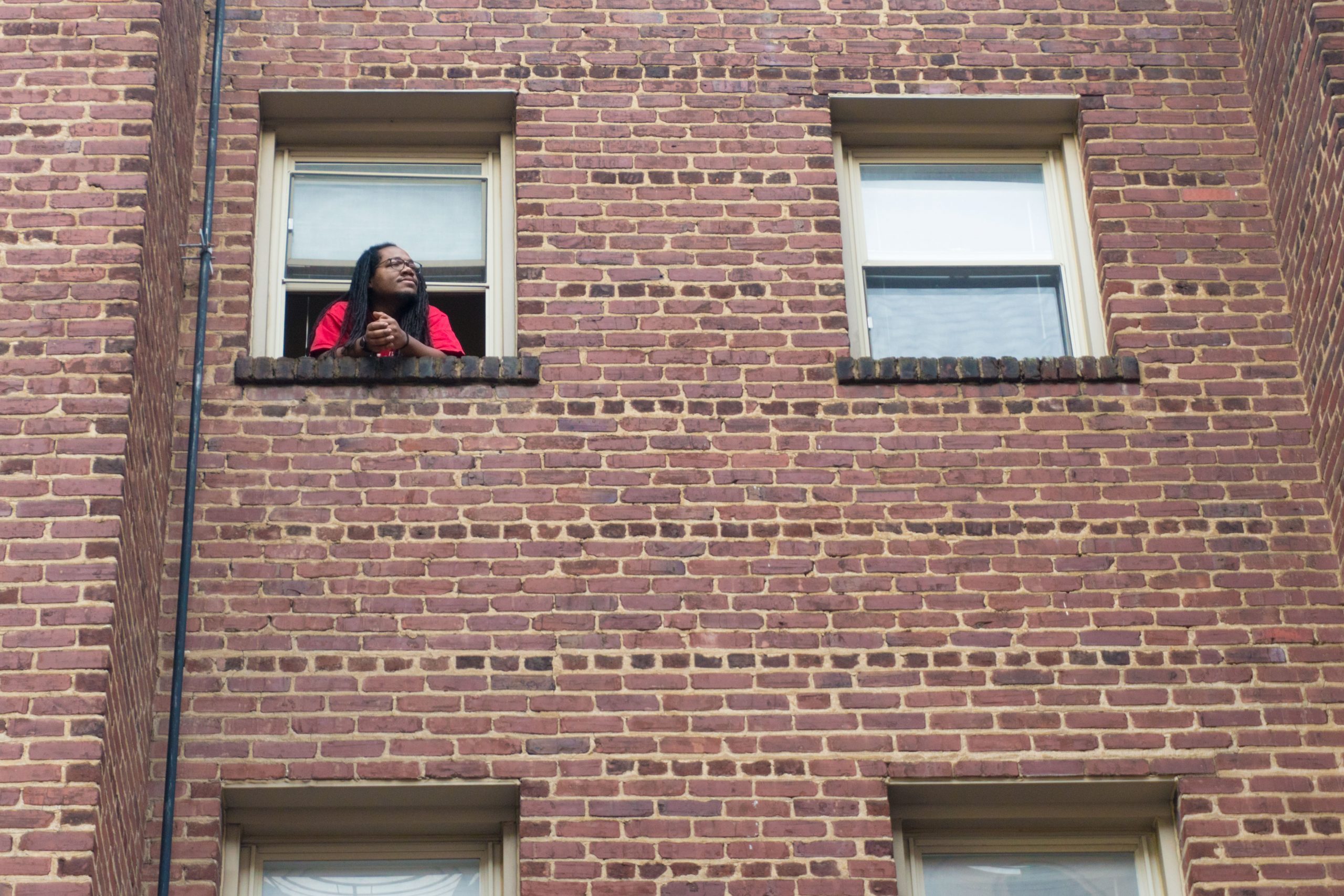
Drummer Keith Butler Jr. looks out the window of his D.C. apartment. He says he even misses rehearsals and preparation tasks for gigs. Jamie Sandel/CapitalBop
Paperwork
To make ends meet, many musicians are doing what they do best as members of a literal gig economy: hustling. For some, this has meant seeking out work in fields where their contributions would be deemed “essential.”
Sharón Clark put in an application to be a Starbucks barista inside a local Safeway. Chris Grasso, a 55-year-old pianist who specializes as a vocal accompanist, made inquiries into becoming an Amazon delivery driver. Crudup said he has joined the essential workforce in Alabama.
However, hiring processes are slow, and the prospect of risking exposure to the virus while working a temporary job can be unnerving. Grasso withdrew his application shortly after talking to an Amazon hiring representative. “I’m not gonna be hauling around 50-pound boxes for a 10-hour shift — I’ll die!” Grasso said. “I’m way too old for that.”
Saxophonist Elijah Jamal Balbed, 30, said that so far the most effective forms of relief have come from within the tight-knit jazz community itself. “When tragedy happens and when something like this occurs, it’s really clear that the scene is in support of each other and comes together when they need to,” he said. This support, Balbed said, has largely come together online, where he has noticed his virtual presence — videos, virtual performances, and calls for donations — garnering “more attention and more views, more donations, more shares.”
Beyond financial relief from private individuals, there has also been a proliferation of attempts to coordinate musician relief efforts at institutional and nonprofit levels. (Both CapitalBop and SoundExchange have compiled lists of these resources.)
Musicians have reported varying levels of success at acquiring these funds. At least two artists interviewed for this article had received grants from the MusiCares COVID-19 Relief Fund, a program set up by the nonprofit affiliate of the Recording Academy. However, beyond that, few artists in the jazz community have said they had success in acquiring charitable financial relief. This is not for lack of trying: As Bormet told CapitalBop, despite the fact that she is “applying for everything,” she hasn’t received “any funding” beyond a one-time micro-grant from the Capitol Hill Jazz Foundation, which is doling out funds to members of its Wednesday night jam session house band.
A specific target of musicians’ frustration is the promise of government funding, which at once seems tantalizingly close and impossibly out of reach. Despite solicitations from the Maryland State Arts Council and the D.C. government, jazz musicians say they have encountered a maddeningly convoluted bureaucracy, whether applying as individuals or as small businesses.
Bormet, who lives in Cheverly, Md., described the process of acquiring these funds a “catastrophe for everyone.” Despite having run a successful jazz festival for nearly 10 years, Bormet said that when trying to file her application, she found herself feeling “like I’m just drowning in a confused pile of money that is just out of reach. So that’s not optimistic.”
No musicians interviewed by CapitalBop reported having received government funding, either in the form of unemployment benefits or as small business grants.
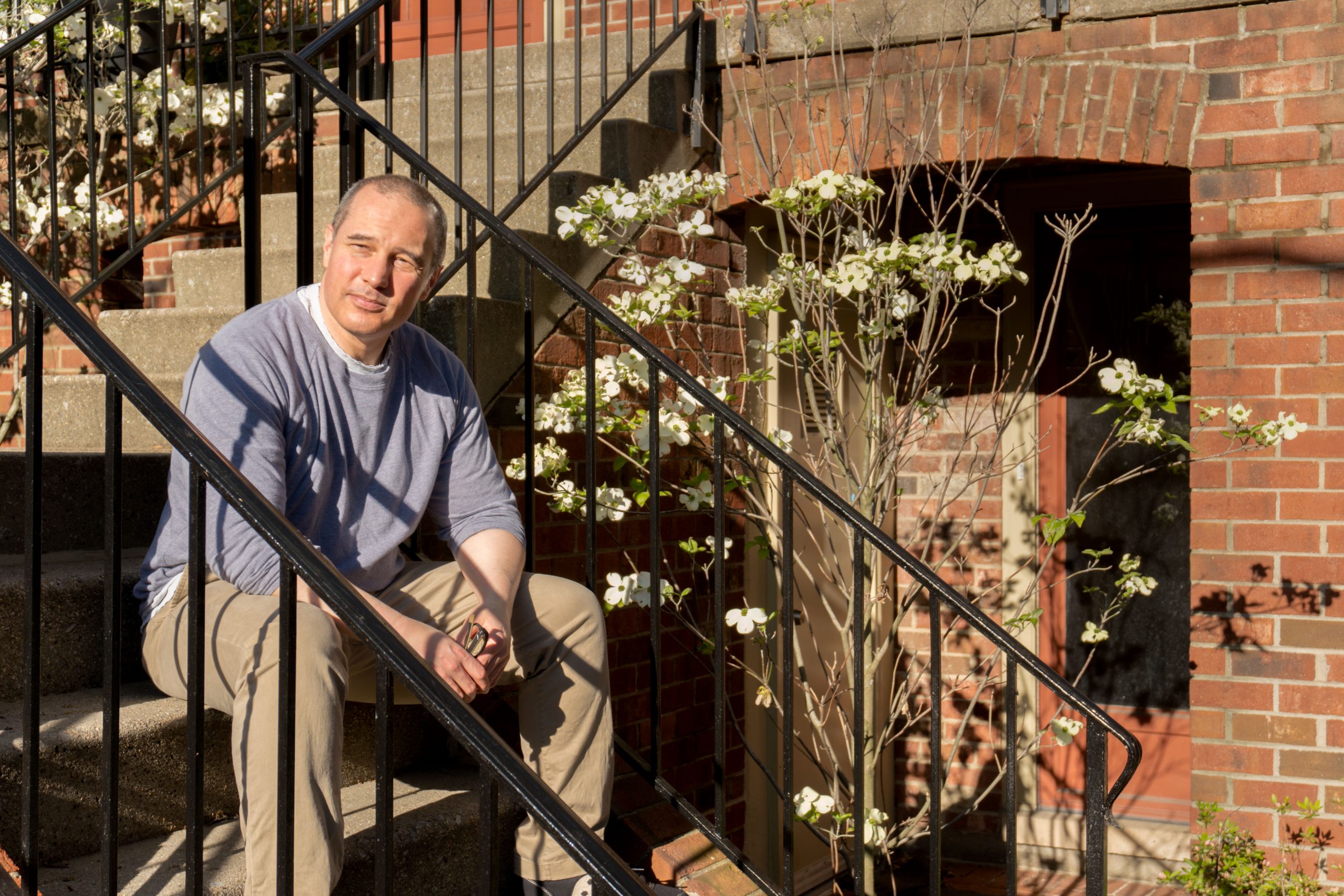
Though he has lost a portion of his income, pianist Chris Grasso says he has been able to move some of his teaching work online. Jamie Sandel/CapitalBop
Pivoting to Video
One of the few income streams that remain for musicians comes from teaching lessons online. Four of the musicians CapitalBop spoke to — drummers Keith Butler Jr., 30, and Julian Berkowitz, 24, as well as Grasso and Balbed — said that they had retained a number of the students they were working with in person before social distancing went into effect. Berkowitz said he was still teaching 20 out of the 22 weekly students he had before, and Grasso even described bringing on new students. “That has been kind of miraculous and a huge relief financially,” Grasso said. “It’s not a total replacement for my income but it’s a good way to that goal, sufficient to get me through.”
Teaching via video call is a challenge — as educators and parents from the elementary to the collegiate level know — especially given the intimate, personal nature of music instruction.
“I can’t really hear someone play along with a song — the audio just doesn’t sync up well enough for that,” Berkowitz said, referring to when students play along to a recording. “So, I’ve kind of had to focus more on technique, and some book stuff, and trying to approach songs in a different way.”
“It changes the way I work with vocalists,” said Grasso, who has long taught a weekly jazz vocal workshop. “In the workshop setting, I’m accompanying them. So, what I’ve had to do is record practice tracks for them, which I send to them and then they work with those during the week.”
Teaching can only go so far in filling the void that social isolation has created for D.C.-area musicians. Some performances continue to happen online, whether via live video stream or in the form of pre-recorded virtual concerts.
However, many musicians are skeptical about the limitations of the technology. “I’ve thought about it but I don’t know what I’d present in that way,” Butler said.
“There’s a lot of live streaming from people’s houses going on and a lot of it is, you know, not that great,” Grasso said. “It’s not a judgment on the music or the musicians, it’s just quality-wise.… At the risk of sounding utterly, disgustingly corporate about it … it is a brand, your performances, and I think you want to keep the quality as high as you can and not just give up just because we’re in this situation.”
Balbed acknowledged that sentiment, though he said he has experienced some measure of success with the platform. “I think a lot of artists, including myself, had been hesitant to do live stream concerts, because some might see it as, you know, devaluing of our art or something like that,” he said. “But I’ve done three now.… The comments and the feedback that I get from people show that, you know, people really appreciate live music and live art and they appreciate our art. And people need it, especially during this time.”
Another barrier is technological: While video-conferencing platforms like Zoom have made it possible to conduct certain business from home, they are generally ill-equipped for the needs of musicians who want to play together in real time. “There’s too much latency, there’s too much delay” for musicians to be able to use services like Zoom, Grasso said. “Bottom line, there isn’t any way of simultaneous performance over the Internet.”
Musicians interviewed for this article alluded to trying out a program called JamKazam, which claims to allow artists to “play music live and in sync with others from different locations.” Berkowitz, the only artist we talked to who has actually tried to use the software, reported that JamKazam would not recognize his webcams (he tried multiple ones) and was incompatible with the latest operating system on his Mac. Grasso says he is wary of the software too.
The Toll, and the Fears
Without a regular opportunity to perform, D.C. jazz artists lack a crucial steady connection with fellow musicians. It’s exacting a price — spiritually and emotionally — on them, many say.
“I think it’s easy to take for granted the rehearsals and getting the music ready for the gigs and stuff,” Butler said. “When all that disappears, you realize you really miss all of it, you know? It would feel like a drag in the moment but I miss playing with the cats, talking about the tunes, arguing about the forms and the changes.”
“I think it’s a little harder for me to connect to my craft lately,” Berkowitz added. “I could be practicing or whatever, but it’s hard [when] you don’t have any opportunity to create music for people. … I think it can kind of break your spirit.”
It’s one thing to picture going back to work, but it’s a much harder thing picturing people going back to play.
—Chris Grasso, pianist
Others insist on an optimistic tone, embracing the silver lining of a welcome respite from a relentless hustle that can feel all-consuming. Balbed described the past month as being “kind of like a rebirth … as far as connecting with my art again.” He explained: “For months, and even years, I’ve been telling myself I would get it together … really practice and study…. And in basically the span of like a week or two, having a lot more free time … has basically forced me to address the things that I guess I kept telling myself I would when I got some time. And now I have the time.”
Clark expressed similar sentiments. “I have tons of time now,” she said. “It’s given me an opportunity to really find out who I am again, musically.” Without a touring schedule, which for Clark is often rigorous, she said she now has “time to perfect things that I didn’t have time to do when I was going all the time. Right now I can really sit down and, you know, dissect a song.”
Still, the lack of live performance has many musicians concerned about decline during the quarantine.
Berkowitz recalled something the drummer Chris Barrick had posted on Facebook: “‘Even if we all shed for 10 hours a day, every day, I bet we’ll be a little rusty when we get back.’ And I think he’s right, in a sense. It’s not that you can’t be productive by yourself with your own instrument, but … jazz is a collaborative art form. So I think it’s hard to really feel as productive … now that we can’t really physically be with other musicians.”
Grasso recalled a conversation with a fellow musician who expressed relief when a live-streamed concert got canceled. “He said, ‘Yeah, I was almost kind of relieved because I feel like I’ve forgotten how to play,’” Grasso said., “He was speaking a little bit hyperbolically, but, you know, there’s what we call ‘gig chops.’ You’re used to two, three, four, five times a week, just getting up and playing with other people and having to adapt in the moment.”
Looking Ahead
Even after social-isolation measures are curbed, many musicians express concern about the long-term future of live music in D.C. Musicians worry about venues weathering the economic hardship brought on by the pandemic, and the possibility that people’s attitudes toward mass gatherings may be changed in a post-coronavirus era.
“It’s hard to imagine how things just go back to normal,” Grasso said. “Every playing situation that I’m in, there are crowds of people in some form or another: restaurants, clubs. I think it’s one thing to picture going back to work, but it’s a much harder thing picturing people going back to play.”
“My concern is that I’m not sure how this whole COVID thing is going to affect live music venues,” Crudup said. “If they’re going to continue being able to have live entertainment. I know there’s going to be a new norm. I’m wondering if live entertainment is going to be a part of that, and how is that going to look.”
“Teaching is cool, doing other things music-related is cool, but for the most part we’re all performers,” Butler said. “Will I be able to play my instrument with other people in a venue? I don’t know, and that’s really scary. I don’t know that any of us have experienced that before: not knowing where we will be able to express ourselves in a way that we can learn and grow.”
A future with a significant reduction in live performance would be brutal for musicians, for fans, for venues, bookers and virtually anyone connected to the D.C. music economy in any way. And for the first time in many musicians’ lives, they are confronted with the possibility of not being able to pursue the thing to which they dedicate nearly every moment of their day: the simple and joyful act of performing music.
Amy K. Bormet, Chris Grasso, coronavirus, COVID-19, DC, DC jazz, Elijah Jamal Balbed, jazz, Julian Berkowitz, Keith Butler, Sharon Clark, Trae Crudup, Washington
